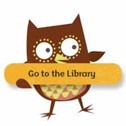At William Reynolds we aim for all our children to become fluent, confident readers who are passionate about reading. Children who read regularly or are read to regularly have the opportunity to open the doors to so many different worlds! Reading will give your child the tools to become independent life-long learners. We can achieve this together through:
- Read Write Inc, a programme to help your child read
- Encouraging children to develop a love of books by reading to them daily; at home and at school
- Giving children access to a wide range of books at school and at home
We use Read Write Inc Phonics (RWI) in Reception, Year 1 and Year 2 to give your child the best possible start with their literacy. We have put together a guide to how the RWI programme works together with some useful links. Please take the time to read this invaluable information as it will help you to support your child with their reading.
What is Read Write Inc?
Read Write Inc (RWI) is a phonics programme which helps all children learn to read fluently and at speed so they can focus on developing their skills in comprehension, vocabulary, and spelling. It also allows them to spell effortlessly so that they can put all their energy into composing what they write. The children are assessed by the RWI team and grouped according to their ability. Small group phonics lessons are taught daily by trained staff and there are consistent expectations across the range of abilities. At the end of each half term the children are assessed to check on their progress and regrouped.
Children learn sounds in school which help them to read and write. They then practise these skills through reading 'Book Bag Books' at home which are specifically pitched to both consolidate learning and provide challenge in an engaging and fun way! This is what they look like.
Other phonetically decodable books will be set via 'Oxford Owl' and are accessible to read at home and in school. Each child will be provided with their individual log-in information for Oxford Owl by their class teacher. You will find it on the inside cover of their home school diary.
Click on the owl to go to the website:

Five key principles underpin the teaching in all Read Write Inc. sessions
Purpose – know the purpose of every activity and share it with the children, so they know the one thing they should be thinking about
Participation – ensure every child participates throughout the lesson. Partnership work is fundamental to learning
Praise – ensure children are praised for effort and learning, not ability
Pace – teach at an effective pace and devote every moment to teaching and learning
Passion – be passionate about teaching so children can be engaged emotionally
Reception
In Reception all children will learn how to ‘read’ the sounds in words and how those sounds can be written down. Those who are ready, will begin to read simple words within books and write some of these.
Year 1 and above
Children follow the same format as Reception but will work on complex sounds and read books appropriate to their reading level. Daily sessions of RWI phonics last for 45 minutes.
The children are taught the sounds in 3 sets.
Set 1 Sounds are taught in the following order together with rhymes to help children form the letters correctly and instantly recognise sounds ready for blending.
Please do not use letter names at this early stage. Click on the hyperlink below to watch the films that show parents and carers how we teach children to read and write with Read Write Inc. Phonics.
https://www.ruthmiskin.com/en/find-out-more/parents/














